This article contains spoilers for Star Trek: Picard season 3 in its discussion of how the series rejects the future.
The third and final season of Star Trek: Picard wrapped up last week.
In our pre-season coverage, The Rise of Skywalker was the obvious point of comparison. Here was another major science fiction franchise to play to the nostalgic fantasies of an aging audience by constructing a narrative built largely around fan service and the assurance that the older generation would not go gentle into that good night. Why bother passing the torch to a younger cast, when the older cast can just yank it back and engage in empty computer-generated spectacle?
The comparison proved more apt than expected. At the end of The Rise of Skywalker, young character Rey (Daisy Ridley) accepts the surname Skywalker as the ghosts of Luke (Mark Hamill) and Leia (Carrie Fisher) look on. In the closing moments of Picard, the show does something similar with a ship. The bulk of the season unfolded on the Titan-A, but the season’s closing moments reveal it has been renamed the Enterprise-G. Even inanimate objects get nostalgic rebrands.
Even beyond the return of the bulk of the original cast of The Next Generation, Picard season 3 was saturated with cameos and callbacks, returning characters like Ro Laren (Michelle Forbes), Shelby (Elizabeth Dennehy), Tuvok (Tim Russ), and the Borg Queen (Alice Krige and Jane Edwina Seymour). According to showrunner Terry Matalas, the production team also tried to bring back Harry Kim (Garrett Wang) and Kathryn Janeway (Kate Mulgrew).
The finale even opens with another cameo, featuring the voice of Walter Koenig, who played Pavel Chekov on the original Star Trek. He is playing Chekov’s son, Anton, who is President of the Federation. Naturally, in the midst of a crucial speech about a major galactic crisis, Anton pauses to remember what his father might have said about the current situation. The effect is to imply that the Star Trek universe consists of about 20 people who all know each other through work.
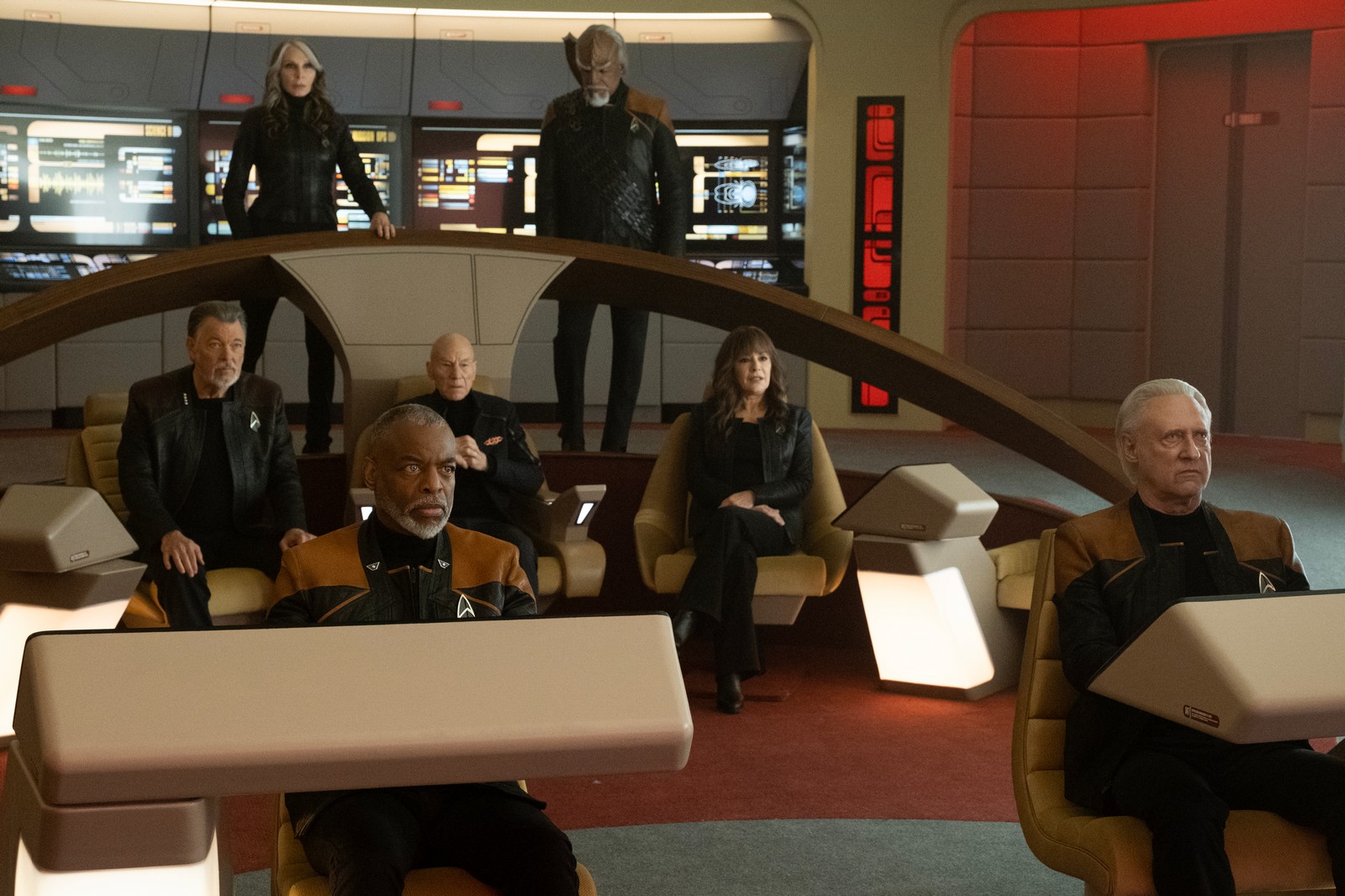
There is something very incestuous about all of this. The Star Trek universe used to seem vast and infinite, populated by hundreds of individuals who all had their own stories. More than that, these characters had lives and relationships that extended beyond what the audience saw on screen. The universe was impossibly large, filled with wonder and potential. There was always more to see and explore, new wonders to consider and contemplate.
Star Trek has featured several Federation Presidents over the years, including Hiram Roth (Robert Ellenstein), Ra-ghoratreii (Kurtwood Smith), and Jaresh-Inyo (Herschel Sparber). Those individuals didn’t need to be related to characters that the audience already knew. Instead, they gave the sense that this was a living and thriving universe with stories that happened off-screen and important events that took place away from cameras.
This extended to the characters themselves. There was always a sense that the episodes and the shows were just one facet of more complicated lives. Jean-Luc Picard (Patrick Stewart) spent seven years on the Enterprise-D, but that was not the entirety of his life. In the first season of Picard, when he needs to consult a doctor, he doesn’t visit Beverly Crusher (Gates McFadden) from the Enterprise; he chats with his previously unseen old friend Moritz Benayoun (David Paymer) from the Stargazer.
There is something depressing and reductive in the way in which Picard season 3 so insistently narrows the scope of its storytelling and its narrative, as if desperate to assure audiences that there is absolutely nothing important about the Star Trek universe that they don’t already know. There is no important person in Starfleet or the Federation who isn’t one degree of separation away from a credited lead on The Next Generation or Voyager. There’s nothing new out there.
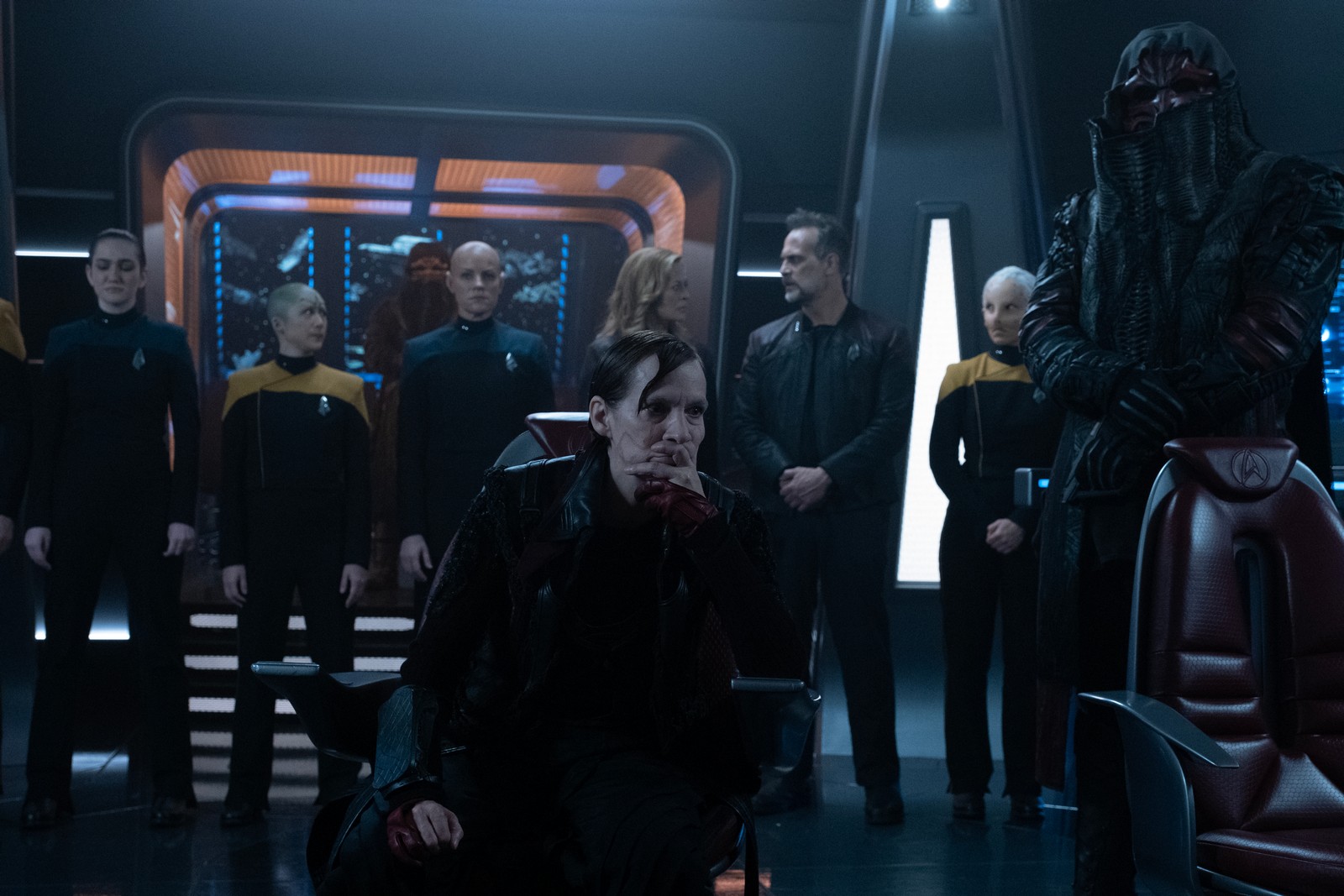
Naturally, none of these older characters have to confront anything as mundane as mortality. Despite being replaced by a shapeshifting infiltrator, the finale confirms that Tuvok is alive and well. Despite being blown up in the season’s fifth episode, “Imposters,” the show originally included a scene where Ro would have been found alive and well in captivity. Despite being shot with two phasers set to kill in the penultimate episode, “Vox,” Matalas has insisted in interviews that Shelby survived.
Indeed, Picard season 3 works hard to reverse the show’s earlier embrace of mortality. The first season was largely built around Jean-Luc Picard accepting the passing of his old friend and surrogate son Data (Brent Spiner), but the third season brings Data back from the dead with a clumsy handwave. Picard even acknowledges that the crew may have “betrayed” Data’s wish “to experience death” in reviving him. Naturally, Data shrugs it off to have cool space adventures.
In the season post-credits teaser, Picard’s son Jack Crusher (Ed Speleers) receives a visit from his old friend Q (John de Lancie). The show’s entire second season was about Q confronting his mortality and passing on gracefully, but here that’s dismissed with a vague line about how Jack is thinking too “linearly,” as if it is foolish to assume that time might move forward. Apparently, Jack doesn’t get the luxury of his own adventures and his own trials; he is trapped replaying his father’s greatest hits.
The third season of Picard presents this as a triumphant celebration of these characters and their world, but there’s something profoundly sad about it. It’s another reminder that Star Trek has largely given up on the future and retreated into a black hole of empty nostalgia designed to reassure fans that things are (and will forever be) exactly the same as they once were. There’s something bleak about all this, a desire to reassure viewers that their childhoods are perpetual and inescapable.
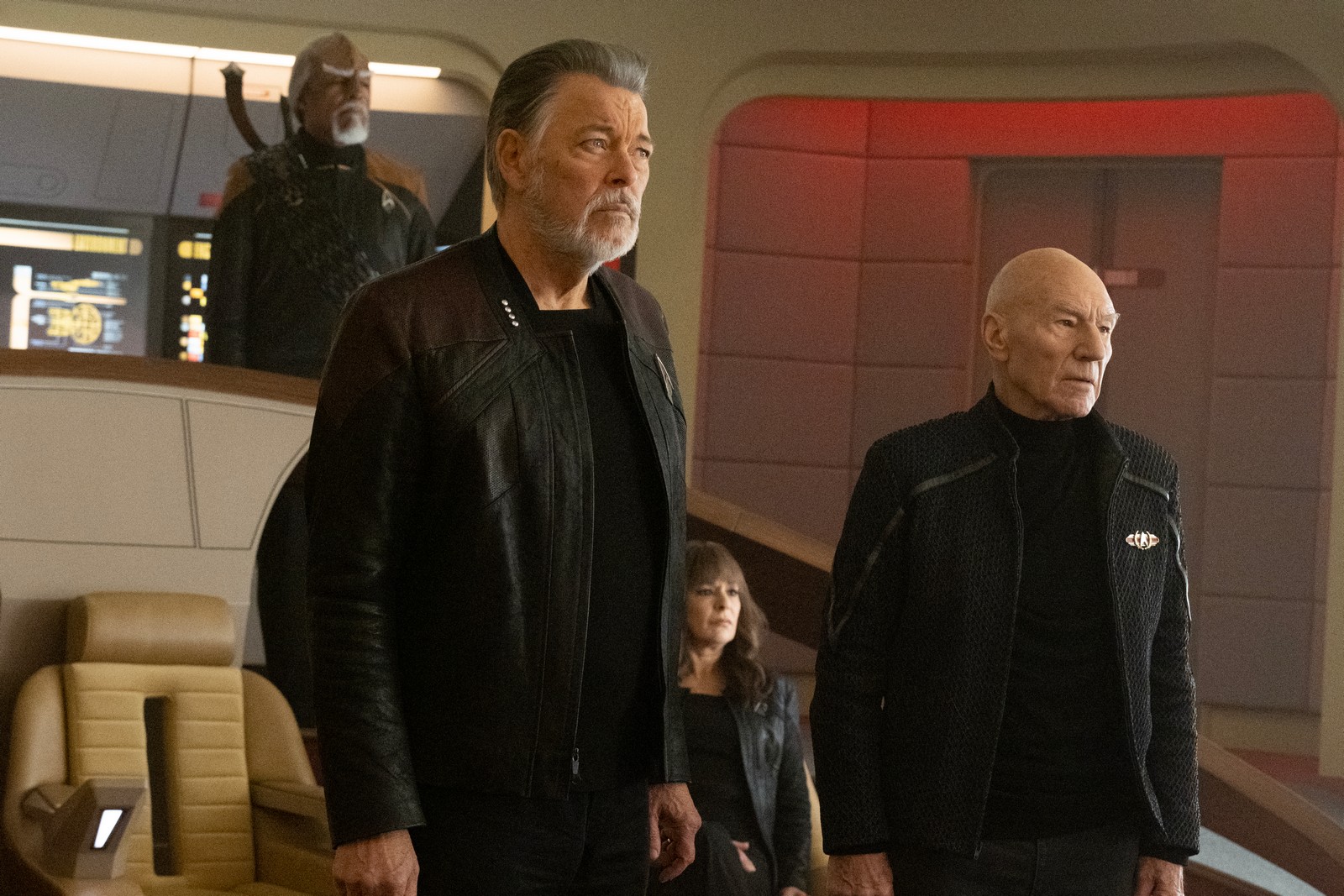
Star Trek: Picard was always a deeply flawed show, existing in the uncanny valley between prestige and trashy television with clumsy writing and an unwillingness to follow its boldest ideas to their logical conclusions. There was always a tension between the show’s nostalgia and its desire to engage with the modern world. The first two seasons surrounded Picard with new characters, a surrogate family that theoretically allowed him to confront morality and legacy. It didn’t really work, but it tried.
The third season ditched the show’s original cast, with the exception of Raffi (Michelle Hurd), and brought back Picard’s old co-workers as “special guest stars.” The final two episodes of the season find the crew returning to the Enterprise-D from the television show, also conveniently resurrected from its crash on Veridian III in Star Trek Generations. Naturally, despite Geordi’s (LeVar Burton) boast about “restoring it,” the bridge looks like it did on the show rather than it did during its last mission.
This recalls the finale of Enterprise, the final show in the wave of spinoffs that began with The Next Generation. Like the finale of Picard, cast members from The Next Generation were brought back as “special guest stars” and foregrounded over the show’s existing leads. Like the finale of Picard, sets from The Next Generation were taken out of storage and made central to the narrative. As with the finale of Picard, the goal was to craft a “love letter” to fans. It even featured a cameo from Matalas.
At the time, everybody saw through the cynicism of “These Are the Voyages…” Co-writer Brannon Braga confessed, “It was the only time Scott Bakula got pissed off at me.” Bakula’s co-star, Jolene Blalock, contended it was “just insulting” to marginalize the show’s cast for nostalgic fan service. Even guest star Jonathan Frakes conceded that it “stinks” and acknowledged it was “a disservice” to Enterprise itself. Contemporary critics called out the pandering as “a self-serving epitaph.”
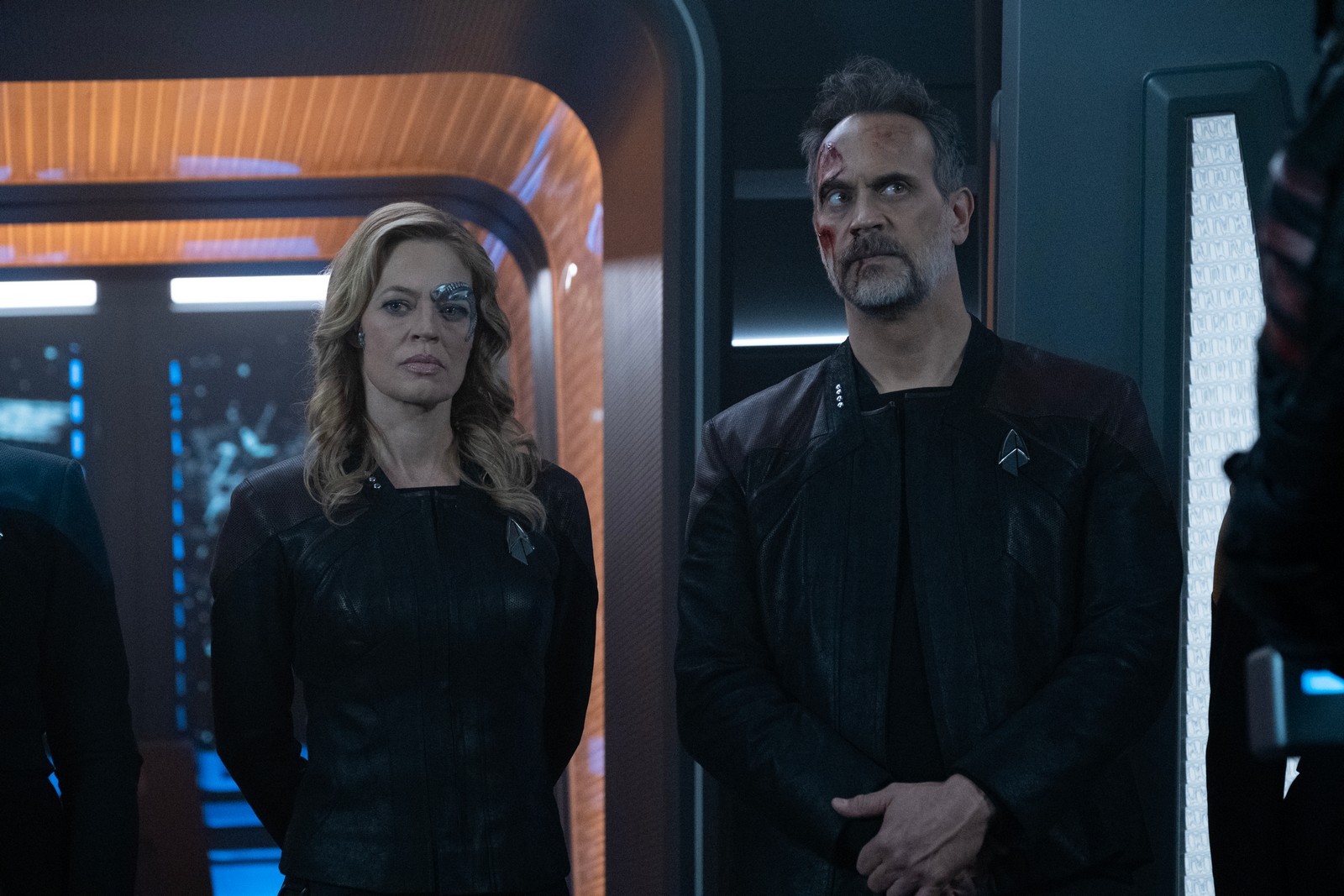
Times change. Pop culture is even more nostalgic now than it was when Enterprise wrapped up. Indeed, the fan service excesses of the final season of Enterprise, including the story of how Klingons lost their ridges and a two-parter set in the mirror universe, seem modest compared to the third season of Picard. That third season is very insistent in its nostalgia, eager to reassure viewers that it’s perfectly fine to chase these old glories and overdose on fan service methadone.
All this nostalgia comes at a cost. It is a zero-sum game. The show’s newer cast members are marginalized within the narrative, their stories sidelined. The romance between Raffi and Seven of Nine (Jeri Ryan) was such a major part of the second season, which is notable in a franchise that has a checkered history when it comes to queer representation. In press for the third season, Matalas insisted that Raffi and Seven were “on a journey this season.”
This seems like an exaggeration. The pair’s relationship was effectively written out before the third season even began, with the duo breaking up off-camera. Over the season’s 10 episodes, the characters only really get a single scene to talk through their relationship, and even that is dominated by Worf (Michael Dorn). Raffi has a more meaningful chat with her ex-husband Jae (Randy J. Goodwin) than she does with Seven. In the finale, Raffi has more physical contact with Worf than with Seven.
In exit interviews, Matalas has boasted of long-term plans for Raffi and Seven on his hypothetical spinoff, Star Trek: Legacy. Given that Matalas has conceded that Legacy is unlikely to happen anytime soon, and he just had 10 episodes with Hurd and Ryan as credited leads in which he could have done anything, there is something deeply frustrating about all of this. It’s a vaguely reassuring promise of a future but without any desire to actually deliver it.
Then again, that’s Star Trek: Picard season 3 in a nutshell. The past is an incestuous, inescapable, and incurious collection of trivia. Tomorrow is always a day away, just out of reach.

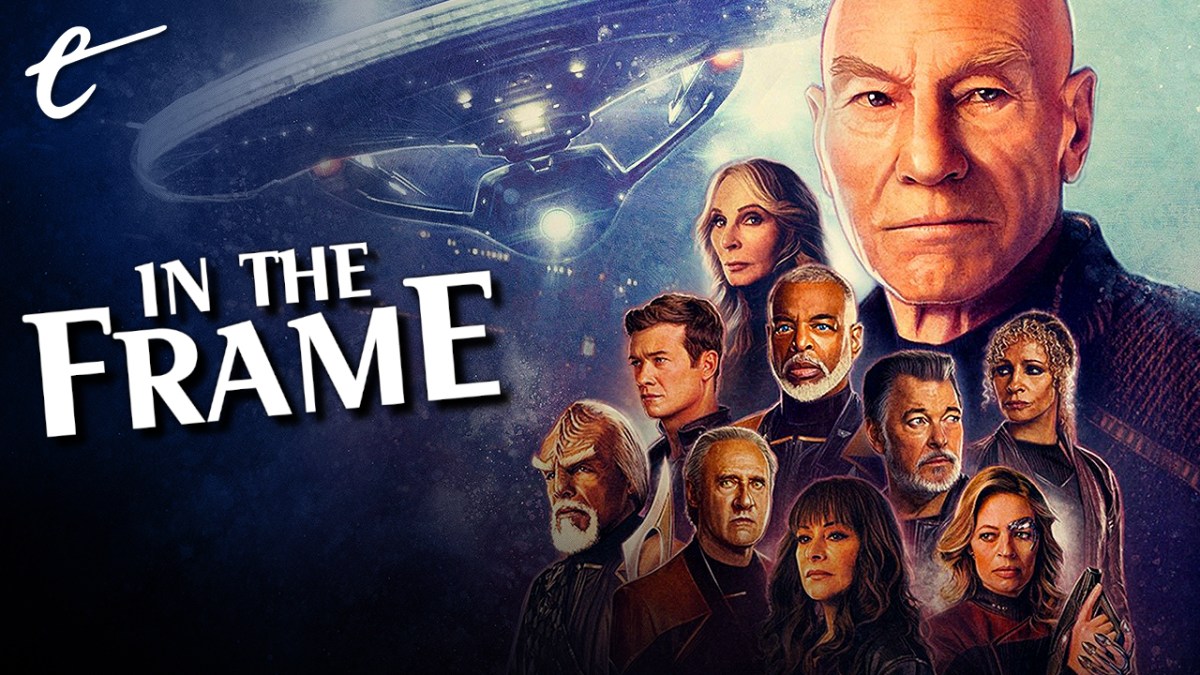




Published: Apr 28, 2023 11:00 am